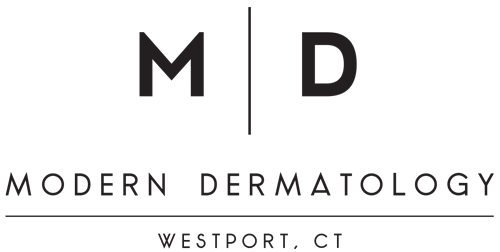Rosacea
Rosacea is a common skin disease that presents with redness, pimples, skin thickening and eye irritation. Rosacea is classified into four categorized based on symptoms and presentation:
Erythematotelangiectatic rosacea: redness, flushing, visible blood vessels (telangiectasias)
Papulopustular rosacea: redness, swelling, and acne-like breakouts
Phymatous rosacea: nasal skin thickening and bumpiness
Ocular rosacea: red and irritated eyes with swollen eyelids and increased stye formation
According to the U.S. government, more than 14 million people are living with rosacea. Most people who get rosacea are:
Between 30 and 50 years of age
Fair-skinned, and often have blonde hair and blue eyes
Celtic or Scandinavian ancestry
Women are more likely than men to get rosacea
Genetic predisposition with likely family members having rosacea and/or severe acne
There are common triggers for rosacea flares:
UV Light – Sunlight is the leading cause of rosacea flare-ups, which leads to redness
Stress
Heat
Alcohol, especially red wine
Spicy foods
Wind and cold
Topical skincare/cosmetic products
Just as the four classifications of rosacea share common triggers, they also share similar prevention protocols and treatment options.
Sun protection – wear a SPF of at least 30, use wide-brimmed hat and avoid direct sunlight as much as possible
Skincare products – use mild cleaners for facial washing, rinse with lukewarm or cool water and gently pat your face dry with a soft, clean towel
Lasers, particularly pulse-dye laser, and other light-based treatments can be effective at addressing redness and visible blood vessels
Prescription topical and oral medications can reduce redness, decrease papules and pustules, and reduce ocular symptoms. applications - brimonidine gel and oxymetazoline hydrochloride cream – can reduce redness for up to 12 hours. Relief is temporary and once the effects wear off, the redness returns.
There are some specific treatments for papulopustular rosacea, phymatous rosacea and ocular rosacea.
Papulopustular rosacea – rosacea with acne-like breakouts.
Topical treatments: Metronidazole, Azelaic acid, Ivermectin, Brimonidine, Oxymetazoline, Clindamycin, Niacinamide, Sodium sulfacetamide and sulfur are among some of the ingredients used to topically treat rosacea.
Oral antibiotics, including doxycycline, minocycline, doxycycline, or azithromycin, as well as ivermectin, can also effectively treat rosacea. In severe cases your doctor may discuss Isotretinoin (Accutane).
Phymatous rosacea – early treatment of phymatous rosacea is imperative
Treatment with Isotretinoin (Accutane), laser or surgery are most effective.
Ocular rosacea – many people with rosacea are unaware it can develop in their eyes. The most common symptom is swollen, red itchy eyes. Other symptoms mimic allergies and include red, bloodshot eyes, tearing or dry eyes, burning, itching, sensitivity to light. When caught early, your dermatologist can advise on an at-home treatment plan including application of warm compresses, cleansing with a gentle eye cleanser and using eye drops/medications. Some patients may need an oral antibiotic, and in more severe cases you may be referred to see an ophthalmologist for a check-up or additional treatment.

